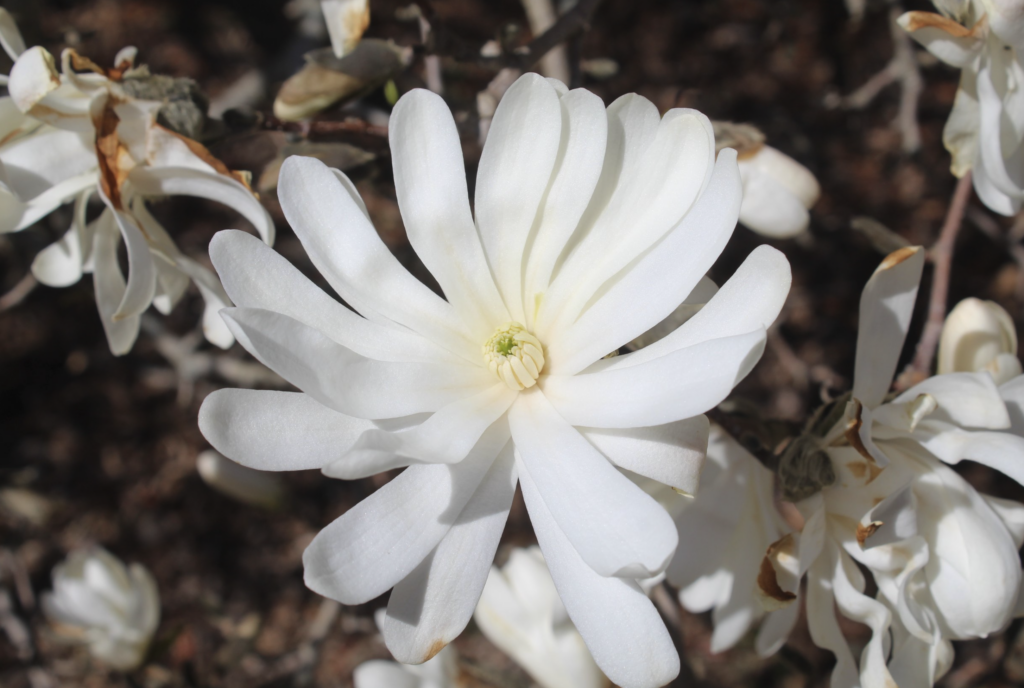December 12, 2023 | By Joe Verstandig, Living Collections Manager, Newport Tree Conservatory
The Star of Newport: Determining the identity of one of Newport’s most incredible trees.
One of my absolute favorite trees in all of Newport is the exceptional magnolia planted in front of the Newport Art Museum. Every spring, it reliably produces thousands of gorgeous, fragrant flowers to broadcast the arrival of a welcomed spring. Visitors in town are impressed and enchanted, while Newport residents are reminded of just how lucky they are to live in such a beautiful place. I was very impressed when I first observed the magnolia bloom over two years ago, still being brand new to Newport and the Tree Conservancy. Much time was spent enjoying the flower’s sweet fragrance and taking photos of the blooms, the smooth bark and majestic octopus-like branching. A metal tag attached to one of the twisting branches displays the plant’s identity as a star magnolia, easily noticeable walking the path to the building. If there is one thing I’ve learned the more knowledge I acquire and the more gardens and arboretums I visit, it’s that you shouldn’t always trust a label. The more I observed the beautiful magnolia, the more I questioned the tag.

Star magnolia (Magnolia stellata) is one of the more common magnolias in Rhode Island’s landscapes. It is a small tree or large shrub, typically a multi-stemmed plant, growing 15-20 feet tall and wide, with dense branching and jagged twig growth. Abundant flowers are produced on bare stems in late March and April in Rhode Island. The fragrant blooms are milk white, often with varying degrees of rose pink on the outside base of the tepals, which are the petals of magnolia flowers. Individual tepals are long and narrow, strap-like in shape, and often number from 12 to over 50 on individual flowers, depending on the cultivar. Star magnolia is a precocious species with star-like flowers in early spring, but there are many similar species, hybrids, and numerous selections of both. While at first the plant just described may draw images of a graceful tree similar to the tree at the Newport Art Museum, it isn’t always that simple in the world of magnolias. Looking at samples and photographs of star magnolia cultivars in plant collections or literature, there are noticeable differences to the tree at the museum.